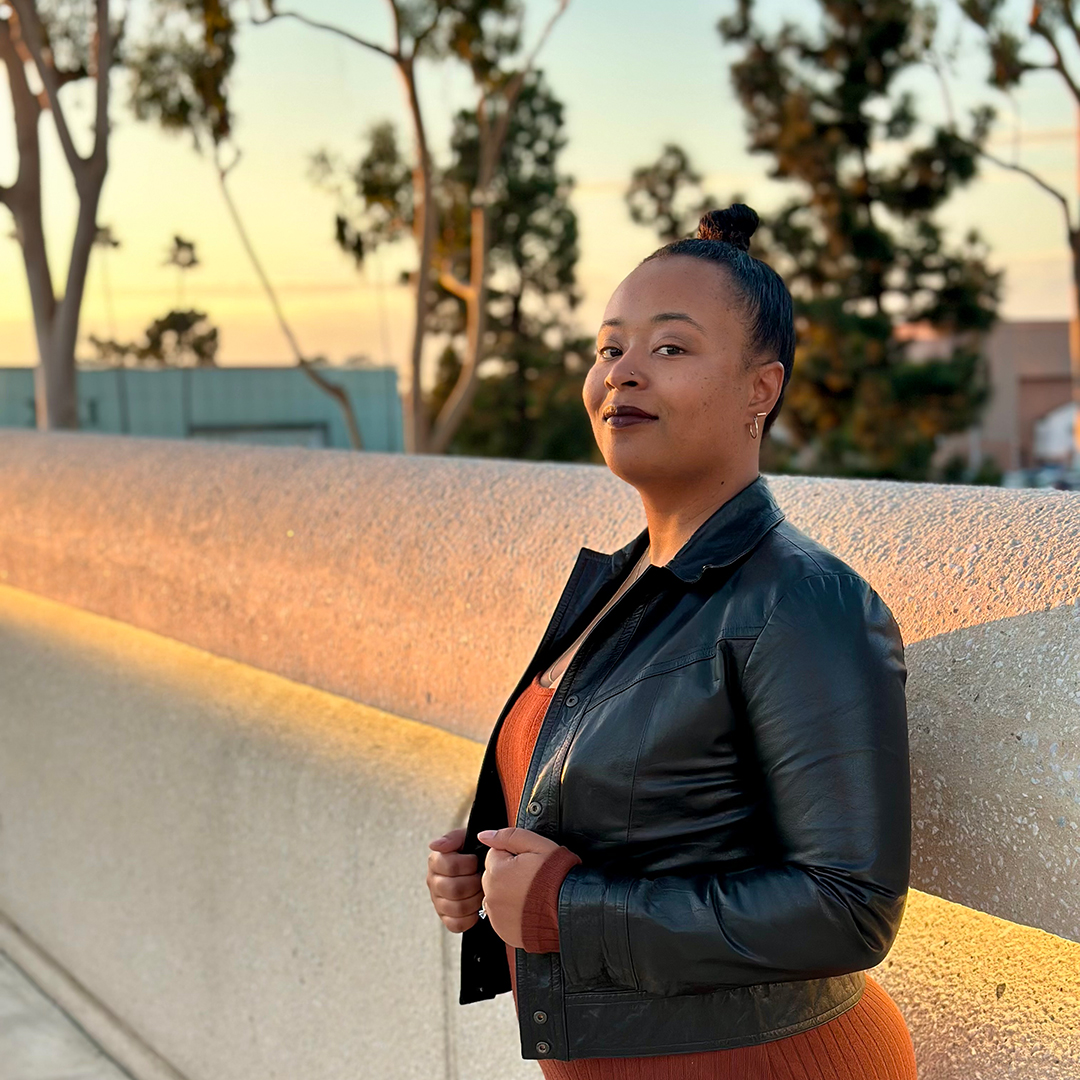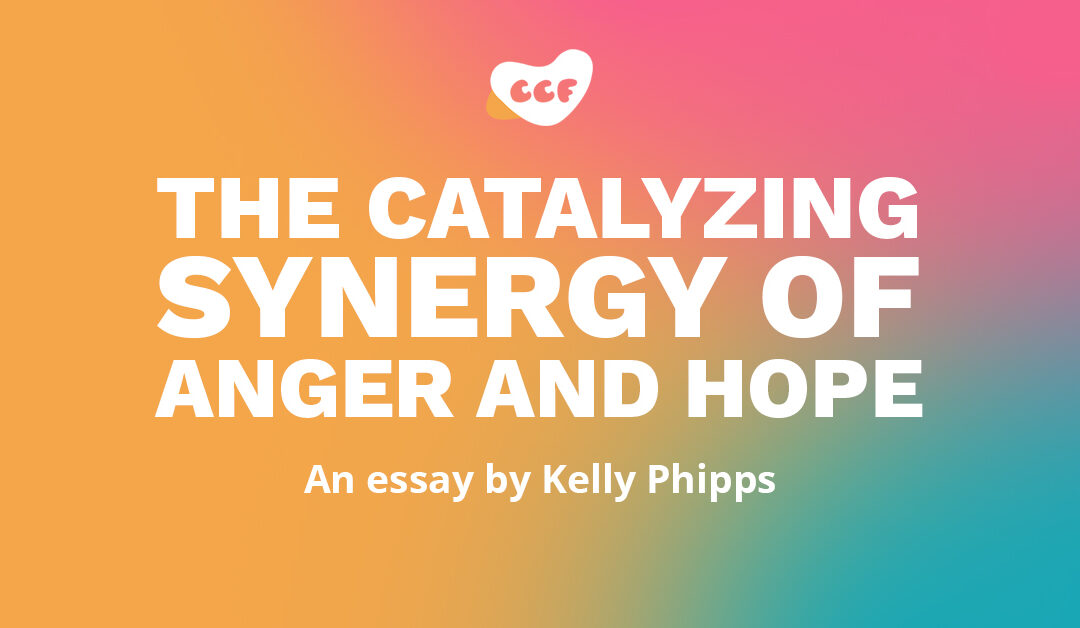By Kelly Phipps, fundraiser, dog mom, and member of the Community-Centric Fundraising Global Council
We are called to do more than collectively simmer.
The fundraisers you know are Stressed with a capital S.
Over the last six months, I’ve joined countless briefings, gatherings, and conversations. I’ve both generated and absorbed the anger, sadness, and fear abuzz in our field. I’ve witnessed the collective contingency planning and seen foundations and organizations speak out and push back in powerful ways.
I’ve also witnessed the mix of these emotions land so hard that despair sets in. And when despair sets in, reactive approaches take root and the work becomes a waiting game instead of one of momentum. Anger when paired with despair takes the wind out of our movement sails.
Our anger is powerful. And it must be tethered to hope.
Today and in the fights yet to emerge, our righteous anger has a potent and wise partner in hope. As fundraisers, we help others tap into “what if the future could be…?” visions about what’s possible in our communities and the world. And we offer a pathway to invest in that vision[1]. Hope is embedded in our nature.
Like every trait embedded inside of us, our environments and circumstances can influence how it manifests. And right now, there are intentional tactics at play meant to stifle the hope that is so critical to our movements. Tactics that stealthily wither up our optimism and create fertile ground for jadedness and scarcity. Tactics that redirect our imagination away from future-building and towards dreaming about the worst-case scenario.
And as a Black woman who navigates compounding systems of oppression threatening both me and those I love—trust me, I get it. The contradictions that can come with being a community-centric fundraiser operating inside of the existing systems are particularly prickly right now.
…what’s gotten me out of bed and into a posture of action is when I can both acknowledge and grieve for what’s at stake, and hold tight to what’s possible. In these types of conditions, to hope is to resist.
And yet, what’s gotten me out of bed and into a posture of action is when I can both acknowledge and grieve for what’s at stake, and hold tight to what’s possible. In these types of conditions, to hope is to resist[2].
We often hear mariame kaba’s wisdom that “hope is a discipline.” And while I don’t yet have it figured all out, or get it right every day, I know that this moment is calling me to be a student of that hope.
If you want to join me in being a student of hope and infuse that into your daily practice as you mobilize resources for your community—let’s get it. Here are some quick ideas on how you can cultivate a strengthened partnership between anger and hope:
1. Acknowledge and dampen the muzzle velocity
Political commentator and journalist Ezra Klein spotlit the concept of muzzle velocity – a tactic described by St*ve Bann*n meant to overwhelm and confuse us into complacency. This can make it hard to plan, understand clear threats, and respond strategically. It makes our work feel ten steps behind and reactive. Muzzle velocity puts us into emotional spirals and dysregulation. It numbs us.
But if you wait 24-48 hours after a shocking executive order, something curious happens. You’ll see judges block the order, chaos erupt around implementation, and lawsuits change the pace. The threats still exist, and sometimes the emperor indeed has no clothes. Naming and understanding this pattern and why it exists is helpful because it invites us into more daily control over how we engage with information.
Ways that I personally dampen the impact of muzzle velocity[3] in my life looks like: choosing a curated list of trusted news sources (often hyperlocal or nonprofit media organizations); having set times I engage with the news; asking myself clarifying questions to get to the root of concrete risk; and engaging with stories of wins in communities.
2. Move in community
I remember sitting around a dinner table while at a Black organizer training a few years ago and the topic of climate crisis came up. The real and scary threats to Black and brown women and children across the globe hung heavy in the air. We started talking about how the climate crisis would impact different areas of the United States and I thought: “Ah! What will I even do when that moment comes?”
Someone next to me chimed in and said, “Well, I’ve been studying community transitions and I’ve been thinking about how Black communities can coordinate.” I then perked up and shared that I had family in the states estimated to get an influx of people and could help coordinate places to stay. The table erupted with excitement and brainstorming and shared resource ideas. Within seconds, our completely hypothetical planning melted my anxiety and gave us shared hope and a mandate.
Our solutions, fights, and actions now and in the near future will only be as strong as the community it’s connected to. As a fundraiser, what communities are you moving in? How can you engage more with community-centric fundraisers and those who should be leading the way (Black and brown working class, queer, and system-impacted folks)? How can you ground more deeply in the CCF principles?
3. Practice playfulness. Invoke imagination.
When I was a child, I would dig up rocks and agates in my wooded backyard and collect them. Collecting those rocks ignited my sense of wonder and discovery. They were little reminders of beauty. After finding my rocks, I would climb our pine tree and look out over the neighborhood and daydream.
I saved a few of those agates and keep them on my bookshelf. In the last year, I’ve made a practice of holding one in my hand while in meetings. Twirling that agate in my fingers is a simple practice that keeps me grounded and reminds me to listen to my inner child—especially when the conversation is heavy or thorny.
Black feminist author bell hooks shared in Teaching Community: A Pedagogy of Hope, that “To be truly visionary we have to root our imagination in our concrete reality while simultaneously imagining possibilities beyond that reality.”
Our work is often serious. And if we dwell only in the headspace of what’s wrong in the world, our momentum is not sustainable. And furthermore, the future world we imagine becomes limited. Lackluster.
Our inner children know a thing or two about imagination and play. And while I don’t subscribe to the notion that childhood is all easy and fun, children have a knack for play that is actually powerful and counterculture. Such wisdom exists in the child that can play and laugh and imagine in the face of bullies and uncertainty. What can we learn from a child whose daydreams reject the box society puts them in?
Play looks different for us all. It might mean going outside and touching a tree between meetings. Or blasting your favorite unserious song while driving to a funder meeting. Or brainstorming with chalk and paint instead of spreadsheets with your colleagues. If you are unsure of how to cultivate play and imagination into your day, think about what you did for fun as a child. I bet little you has the answer.
4. Make hope an action.
An undeniable way to catalyze the synergy of anger and hope is to get involved. Find a local community-led organization or political home and get involved! Have the hard conversations with friends, families, and neighbors. Get to know your local elected officials and engage them regularly around issues close to your heart. Our presence and involvement are a declaration that our world is worth fighting for.
Anger powers our engines. Hope must steer.
Brittany Cooper, the author of Eloquent Rage, says that “Hope is about the belief that we can make things better.” We are called right now to do more than collectively simmer in anger. Because when we make unlikely but balancing partners with anger and hope, our movement momentum thrives. How are you committing to hope today?
Footnotes
- I say this acknowledging the paradoxes of nonprofit 501(c)3s as imperfect containers for advancing community work inside of our existing systems.
- “Hope is an act of resistance.” — Preston Norton, Hopepunk
- Dampening the impact of muzzle velocity is not an invitation to disengage and not be aware. It’s an invitation to engage in a way that lessens confusion and numbing that stymies our action.

Kelly Phipps
Kelly Phipps (she/her) is a doting auntie, audiobook-lover, and dog-cuddles enthusiast. When she isn’t in the thick of an Afrofuturist novel or learning to dance, Kelly serves as the fundraising and communications director at a social justice organization. Kelly has spent over a decade in nonprofit fundraising and communications (in healthcare, higher education, and grassroots community work). You can connect with Kelly here.
Discover more from CCF
Subscribe to get the latest posts sent to your email.

